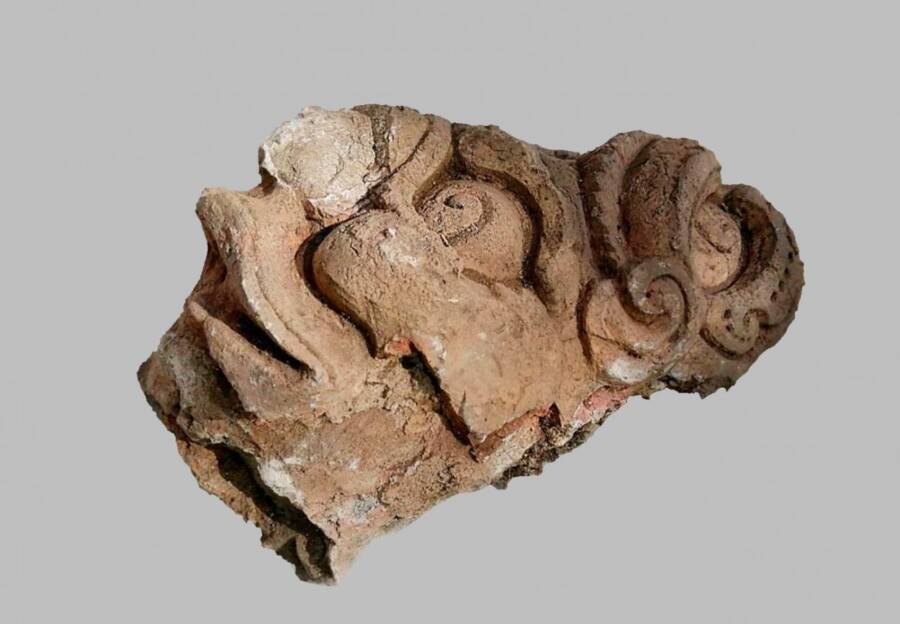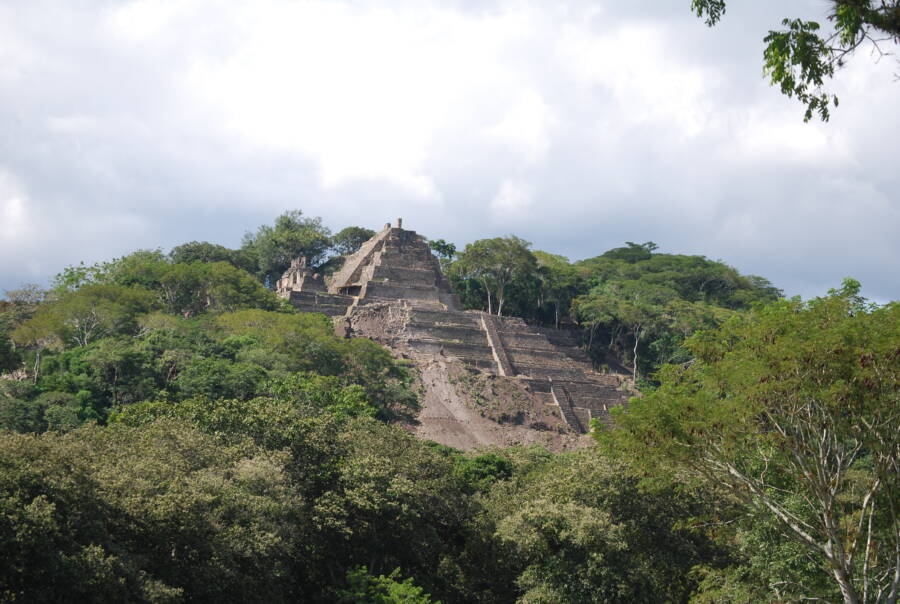Many of the masks were discovered at digs in 2013 and 2018, and represent numerous underworld deities.

INAHA small sampling of the stucco masks found at the Toniná archaeological site.
The Toniná archaeological site in southern Mexico is proving to be a treasure trove of pre-Columbian Maya relics, as a team of archaeologists working in the region recently unveiled a large number of carved stone masks worn by the ancient population.
A new statement from the Mexican National Institute of Anthropology and History (INAH) says, “42 years of research work in the archaeological zone of Toniná … has found a diversity of archaeological materials, among which a large number of masks stand out, with various representations in stucco and sculptures, which give an idea of the ancient inhabitants of this city.”
Many of these stucco pieces, they say, were found in and around a structure known as the House of the Recreation of the Universe, near the Sunken Plaza of the Palacio de los Caracoles, both of which date back to around 650 C.E.
Archaeologist Yadeun Angulo said the masks symbolize elements of the underworld, the Earth, and the sky, and would have held significant spiritual meaning for the people of the time.

Many of the masks represent deities, particularly those of the underworld.
The buildings themselves were also adorned with architecture reminiscent of a human face — “the human body is part of the decoration of the buildings,” Angulo said.
As Heritage Daily reports, many of the masks were discovered back in 2013, but one notable example was found more recently, in 2018, in the Temple of the Sun and depicts a lord of the underworld.
Representations of underworld deities, Angulo explained, generally lacked a lower jaw, making it abundantly clear that they are dead.
“This gentleman has the upper jaw and a shark tooth, because they are solar deities and he really is a monstrous doll, it was part of a huge representation, where it was seen how the lords of Toniná have a relationship with fantastic beings from the interior of the Earth and of the starry sky,” the archaeologist said.
Several masks also represent deities from other cultures, including a representation of the Aztec rain god, Tláloc, a figure worshiped in the Teotihuacán culture of the Central Highlands between the third and eighth centuries C.E.

Wikimedia CommonsA Tláloc representation similar to one found at the Toniná site.
The representation of other cultural deities, Angulo believes, shows that the ancient Maya had a close relationship with the people of the Central Highlands.
Another figure found alongside the masks served as a mannequin and as a base for the creation of jade masks, as evidenced by mask fragments that are still attached to it.
Angulo said he hopes to be able to display the masks and figures in future temporary exhibitions — especially since the Toniná site has also supplied archaeologists with full-body sculptures of gods, recreations of scenes from the Popol Vuh, and entire pages featuring twin deities Hunahpú and Ixbalanqué of the underworld and the sky.
Previously, the Toniná site revealed the ancient Maya practice of turning the bodies of deceased rulers into giant rubber balls to be used in the sport of pelota.

An ancient Maya temple at the Toniná archaeological site in southern Mexico.
At the time, Angulo explained that the ancient Maya likely wanted their rulers’ bodies to “be converted into a life force, something to stimulate their people. Just as Egyptians tried to preserve [bodies], we know here they were transformed in another way.”
The ballgame was not only a popular sport, but also a representation of mythological battles between the forces of life and the forces of death. The courts on which pelota was played were likewise seen as a connection to the underworld, and served as locations for ritual sacrifice.
In many instances, these sacrifices highlighted “the regenerative, nourishing power of sacrificial blood.”
Depictions of the underworld and the delicate balance between life and death were prominent themes in the art of the Maya people. This newly unveiled collection of stucco masks only further demonstrates the importance of these beliefs.
“These faces, these portraits, look at us from the past. Their gaze transports us to the royal court of the ancient and powerful Mayan kingdom of Po’o”, Angulo said.
After learning about these ancient Maya masks, see the objects archaeologists believe might offer insight into the collapse of Maya civilization. Then, check out the 1,800-year-old Roman soldier mask that was unearthed in the ancient city of Hadrianopolis.





